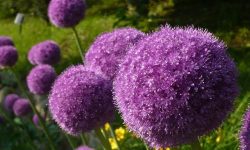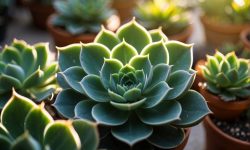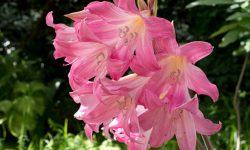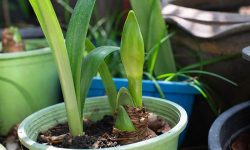Irises are among the most elegant and beloved flowers in the garden world, admired for their wide range of colors, unique forms, and timeless beauty. Their blooms add a striking touch to landscapes, from early spring through midsummer, depending on the variety. Knowing when iris flowers bloom helps gardeners plan their garden displays, ensuring color and life throughout the growing season. These hardy perennials can transform any space into a vibrant masterpiece when planted thoughtfully. Understanding their blooming schedule is the key to enjoying their full charm and maintaining healthy growth year after year.
Each type of iris has its own flowering season and environmental preference. Some varieties burst into color as soon as spring warms the soil, while others wait until early summer or even rebloom in fall. Climate, sunlight, and care all influence how long and how often irises bloom. By learning what conditions they need and when to expect their flowering period, you can plan a garden that blooms in waves of spectacular color. In this guide, we’ll explore when different types of irises bloom, what affects their timing, and how to extend their flowering for maximum beauty.
Understanding the Bloom Cycle of Irises
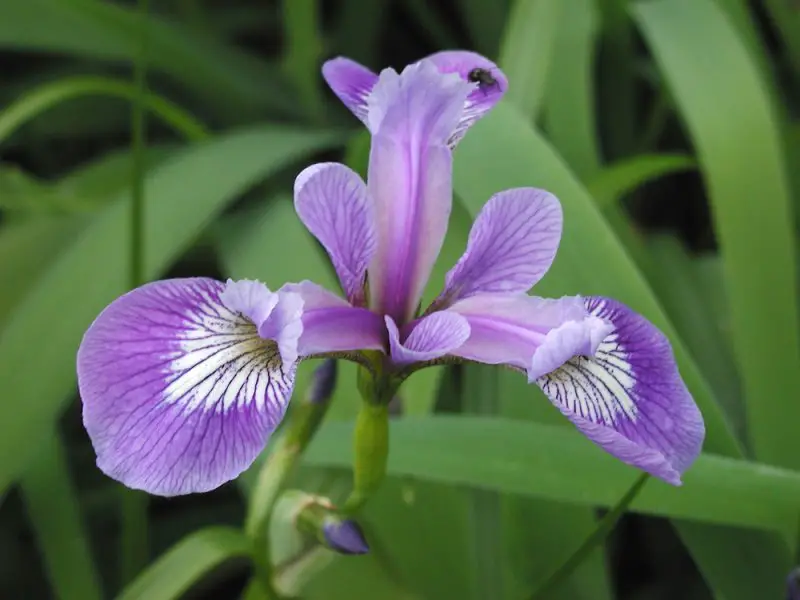
The bloom cycle of irises varies depending on the species, growing conditions, and climate. Generally, most iris varieties bloom between late spring and early summer, but their timing can differ greatly. Early-blooming irises such as dwarf bearded irises start showing their flowers in late March or April, while taller bearded varieties often bloom from May into June. Reblooming irises, as their name suggests, produce a second round of flowers in late summer or early fall if the weather remains favorable. Each type follows a rhythm influenced by temperature, sunlight, and overall plant health.
Understanding this cycle helps gardeners create continuous displays of color. By combining early, midseason, and late-blooming varieties, you can extend the iris season across several months. For instance, planting dwarf, intermediate, and tall bearded irises together ensures a steady sequence of blooms from spring through summer. The bloom cycle also depends on the iris’s dormancy and growth pattern. After flowering, irises focus on producing energy for their rhizomes, which store nutrients for the next season’s blooms. Healthy foliage during this period is essential to support strong flower development for the following year.
Environmental factors play a major role in determining when irises bloom. Warmer regions with mild winters may experience earlier blooming periods, while colder climates delay flowering until late spring. Adequate sunlight is critical, as irises require at least six hours of direct light per day to perform well. Consistent watering during their active growth stage also ensures the blooms open fully and last longer. By understanding their natural bloom rhythm and environmental triggers, gardeners can predict and enhance the flowering season for maximum beauty and garden impact.
When Different Types of Irises Bloom
The blooming period of irises depends largely on the species, with each type following its own seasonal rhythm. Bearded irises, the most widely grown variety, typically bloom from late spring to early summer. Dwarf bearded irises open earliest, often in late March or April, followed by intermediate and tall bearded types that peak between May and June. Some modern cultivars, called reblooming irises, can flower again in late summer or early autumn under favorable conditions. Their repeat blooming makes them a popular choice for gardeners who want continuous color throughout the year.
Siberian and Japanese irises usually bloom slightly later than bearded irises, often in early to mid-summer. These varieties thrive in moist, well-drained soil and enjoy partial to full sunlight. Their elegant, slender petals and graceful growth habit create a soft, flowing effect in garden beds and near ponds. Siberian irises are particularly reliable bloomers that return year after year, while Japanese irises produce large, flat flowers that resemble artistic watercolor paintings. Their slightly later blooming period complements early-blooming irises beautifully, extending the flowering season seamlessly.
Dutch irises, on the other hand, bloom earlier and are often used as cut flowers. They produce slender stems topped with colorful blooms in April or May, making them excellent companions for tulips and daffodils in spring gardens. Because each type of iris blooms at different times, mixing various species in a single garden creates a continuous wave of color from early spring to mid-summer. By selecting and combining the right varieties, gardeners can enjoy irises in bloom for nearly half the growing season, adding depth and rhythm to the landscape.
Factors That Affect Iris Bloom Time
Climate and Temperature
Climate plays one of the most decisive roles in determining when irises bloom and how long their flowers last. In warm and mild climates, spring arrives earlier, prompting irises to bloom weeks before those in cooler northern regions. For example, gardeners in southern zones may see blooms as early as late March, while northern growers must often wait until late May. Extreme temperature fluctuations can significantly affect flower quality and duration. A sudden cold snap after buds begin to form can damage them, resulting in deformed or fewer blooms. On the other hand, hot, dry winds may cause petals to wilt prematurely and shorten the flowering period.
Most iris varieties thrive when daytime temperatures remain between 60°F and 75°F, paired with cooler nights. This balance promotes healthy bud development and prolonged blooming. Protecting irises from frost in early spring using mulch or garden fabric helps prevent bud injury. In regions with unpredictable weather, choosing cultivars adapted to local conditions improves success rates. Consistent spring warmth, stable moisture, and protection from temperature extremes work together to ensure steady blooming and vibrant color. By understanding your area’s growing zone and typical seasonal patterns, you can accurately predict bloom times and plan your garden for a continuous wave of iris beauty.
Sunlight Exposure
Sunlight exposure directly determines how many blooms irises produce and when they appear. These plants are sun lovers that require a minimum of six hours of direct light each day for optimal growth. Adequate sunlight stimulates strong rhizome development, which stores the energy needed for consistent flowering. In areas with partial shade, irises often produce fewer flowers, weaker stems, and delayed blooming. The petals may appear less vibrant, and the overall growth becomes less vigorous. Planting in open, sunny spots ensures full, colorful blossoms and healthy foliage.
However, balance is essential—especially in regions with intense summer heat. Too much direct sunlight can cause the flowers to dry quickly or fade before their time. Providing light afternoon shade helps extend the bloom life and keeps the plants cooler. When growing irises near trees or structures, check that they still receive enough light throughout the season, as shifting shadows can alter exposure. For container-grown irises, repositioning pots to follow the sun ensures even growth. With consistent light management, irises stay strong, bloom reliably, and display vivid color from the first flower to the last.
Soil Quality and Moisture
Soil health and moisture balance play a major role in determining when irises bloom and how vibrant the flowers appear. Irises prefer rich, loamy soil that drains well and remains slightly moist during their growing period. Waterlogged soil causes rhizome rot, one of the most common problems that prevent blooming altogether. Meanwhile, overly dry soil delays bud formation and reduces bloom size. To keep irises healthy, aim for soil that feels damp to the touch but never soggy. Amending the planting area with compost or aged manure improves both texture and fertility, helping rhizomes store more energy for flowering.
Maintaining even moisture during spring ensures buds form properly and open at their peak. Mulching lightly with organic material helps retain water and stabilize soil temperature, particularly in hot or windy areas. Avoid piling mulch directly on top of rhizomes, as this can lead to rot. In dry climates, water deeply once or twice a week rather than shallowly every day to encourage strong root growth. Good drainage, combined with nutrient-rich soil, supports steady bloom timing and prevents stress-related delays. When soil conditions are ideal, irises reward gardeners with tall, graceful stalks and abundant, long-lasting flowers.
Extending the Bloom Season of Irises
Extending the bloom season of irises is one of the most rewarding strategies for creating a garden that stays colorful longer. The key lies in choosing a mix of early, midseason, and late-blooming varieties. Dwarf bearded irises begin the season with blooms in early spring, followed by intermediate and tall bearded types in late spring and early summer. Planting Siberian or Japanese irises, which bloom slightly later, continues the display into midsummer. For even greater longevity, consider adding reblooming irises that flower again in late summer or early fall under the right conditions. This layered approach ensures that as one group fades, another takes its place, keeping your garden vibrant for months.
Proper care throughout the growing season also helps extend bloom time. After each group of irises finishes flowering, remove spent blooms to prevent energy from going into seed production. This allows the plant to conserve strength for developing new buds or storing nutrients for future blooms. Consistent watering during dry spells and balanced fertilization encourage repeat flowering in reblooming varieties. Avoid overfeeding with high-nitrogen fertilizers, as this can promote lush foliage at the expense of flowers. A balanced formula with more phosphorus supports stronger, longer-lasting blooms. Maintaining healthy foliage after flowering is equally important because it fuels next year’s growth.
Environmental management also plays a part in prolonging the bloom period. In hotter regions, providing partial afternoon shade can prevent flowers from fading too quickly. Dividing iris clumps every three to four years rejuvenates them and restores strong blooming performance. Regular soil enrichment and pest control prevent stress that can shorten the blooming window. With thoughtful planning and care, gardeners can enjoy an extended iris season filled with graceful colors and captivating fragrance that lasts from spring well into fall.
How to Encourage Irises to Rebloom
Encouraging irises to rebloom requires a combination of proper variety selection, consistent care, and ideal growing conditions. Not all irises are capable of blooming twice a year—only reblooming varieties, such as certain bearded irises, have the genetic ability to flower again in late summer or early fall. To help them perform their best, start by ensuring they receive at least six hours of direct sunlight daily. Irises need ample light to build energy through photosynthesis, which powers both their spring and late-season blooms. Providing nutrient-rich soil with good drainage ensures strong rhizome growth and healthy bud formation. Avoid planting them too deeply; the top of the rhizome should sit just above the soil surface to absorb warmth from the sun.
Regular maintenance during and after the first bloom cycle also plays a crucial role in stimulating a second round of flowers. Deadhead spent blooms promptly to prevent seed formation, allowing the plant to redirect energy into new growth instead of seed development. Once the first flowering period ends, apply a balanced fertilizer with higher phosphorus content to encourage bud production. Water deeply and consistently through summer, especially during dry spells, but make sure excess water drains freely. Keeping the soil evenly moist helps the plant remain active instead of entering dormancy too early. Removing any yellowing or damaged leaves during this stage improves air circulation and reduces disease risks, keeping the plant vigorous for another bloom cycle.
To enhance reblooming potential, it’s also important to divide irises every three to four years. Crowded rhizomes compete for nutrients and sunlight, which can reduce or completely stop reblooming. Dividing in late summer, right after the first flowering phase, gives the plants time to reestablish before cooler temperatures arrive. Providing a light layer of mulch helps regulate soil temperature while retaining moisture. With proper care and attention, reblooming irises can produce a stunning encore of flowers, extending your garden’s color into late summer or early fall and showcasing the plant’s full beauty twice in one year.
Regional Bloom Times for Irises
Northern Regions
In northern regions, where winters are long and spring arrives later, irises typically bloom from late May through June. The cooler temperatures slow down growth and delay bud formation, but the flowers often last longer once they open. Early spring varieties, such as dwarf bearded irises, begin blooming as soon as the soil warms and frost danger passes. Tall bearded and Siberian irises follow in early summer, producing strong, vivid flowers that thrive in the cooler air. Because of the shorter growing season, reblooming irises may struggle to produce a second flush before autumn frosts arrive.
To make the most of the northern climate, choose hardy varieties that can tolerate cold winters and short summers. Plant irises in sunny, well-drained locations to maximize exposure during the limited growing window. Adding organic mulch after the ground freezes helps protect rhizomes from frost damage. In these regions, a well-planned combination of early and midseason irises can still provide six to eight weeks of continuous blooms, ensuring a colorful and fragrant garden despite the brief summer.
Southern Regions
In southern regions with mild winters and early springs, irises bloom much sooner—often from late March through May. The warmer temperatures and longer growing seasons allow for a wider range of iris varieties to thrive, including reblooming types that can flower again in late summer or early fall. Because heat can shorten bloom duration, gardeners in southern climates benefit from providing light afternoon shade to protect the delicate petals from fading.
Irrigation is especially important in the south, as high temperatures and dry air can stress the plants. Water deeply once or twice a week, ensuring that the soil remains moist but well-drained. Mulching helps conserve water and regulate soil temperature. In these regions, planting a mix of early and late-season varieties creates a stunning wave of color that can last from spring through autumn. With attentive watering and partial shade, southern gardeners can enjoy some of the most vibrant and long-lasting iris displays in the country.
Coastal and Pacific Regions
Coastal and Pacific regions offer some of the best conditions for irises, thanks to their mild temperatures and balanced humidity. In these areas, irises usually bloom from April through June, with some varieties flowering even into July. The moderate climate encourages lush growth and large, long-lasting blooms. Coastal winds, however, can dry out foliage or topple taller varieties, so providing wind protection is essential. Gardeners in these regions often succeed with both bearded and Japanese irises, which love the combination of sunlight and cool coastal breezes.
Because frost is rare, reblooming irises perform exceptionally well in coastal areas. With consistent care, they can flower twice a year—once in spring and again in late summer. Regular watering, especially during dry spells, helps sustain continuous growth and encourages multiple bloom cycles. The coastal environment’s mild weather and rich soil provide near-perfect conditions for irises, allowing them to flourish almost year-round with minimal stress. By mixing early, midseason, and late bloomers, gardeners can enjoy a dazzling, extended display of iris beauty along the coast.
How Weather Patterns Influence Iris Blooming
Weather patterns play a crucial role in determining both the timing and quality of iris blooms. In regions with mild, steady spring temperatures, irises typically flower right on schedule, producing full, vibrant blossoms that last for weeks. However, when spring arrives abruptly or fluctuates between cold and warm spells, bloom cycles can become unpredictable. A sudden frost can damage young buds, while early heat may trigger premature blooming. Irises depend on gradual warming to awaken their rhizomes and promote even flowering. If the weather shifts too rapidly, the plant may conserve energy instead of blooming, resulting in fewer or smaller flowers that fade faster.
Excessive rain or drought conditions also affect bloom consistency. Heavy rain can cause root rot, especially in poorly drained soil, while prolonged dryness hinders bud formation. Gardeners should aim to maintain balanced soil moisture during the growing season by watering deeply but infrequently. Adding mulch around the base helps regulate soil temperature and prevents rapid evaporation. During hot, dry spells, morning watering allows moisture to reach the roots before heat intensifies. In cooler or rainy climates, ensuring proper drainage through raised beds or gravel-based soil prevents waterlogging.
Wind and storm exposure can physically damage flower stalks, especially in tall bearded varieties. Providing wind barriers or staking helps protect delicate stems. In areas with unpredictable weather patterns, timing your planting and selecting regionally adapted varieties can make a significant difference. Hardy types like Siberian and Japanese irises often handle climate variations better than bearded irises. By adjusting care to the weather—protecting against frost, managing moisture, and sheltering from wind—you ensure your irises bloom beautifully each year, no matter what nature brings.
Caring for Irises After Blooming
Post-bloom care is one of the most important stages in an iris’s yearly cycle, yet it’s often overlooked. After the stunning flowers fade, the plant enters a recovery and renewal phase. During this time, the green foliage continues photosynthesis, storing nutrients in the rhizomes for next year’s growth. Cutting leaves too early can interrupt this process and weaken the plant. The best practice is to remove only the spent flower stalks while keeping the leaves intact until they naturally yellow and wither. This allows irises to rebuild strength and ensures a strong bloom season the following year.
Watering should continue regularly after blooming but at a reduced frequency. The soil should remain slightly moist but never soggy, as too much water can promote fungal infections or rot. Applying a light fertilizer—preferably one higher in phosphorus—helps nourish the rhizomes and encourages next season’s bud formation. Keep the area around the plants weed-free to minimize nutrient competition. As summer progresses, gradually reduce watering as the plant enters its dormant stage. Avoid overfeeding, as too much nitrogen stimulates leaf growth instead of flower production.
Late summer and early fall are ideal times to divide overcrowded clumps. Over time, dense rhizome clusters restrict airflow and reduce flowering. Carefully dig them up, trim off dead portions, and replant healthy sections about 12 inches apart. In colder regions, a light mulch layer before winter protects the rhizomes from frost damage. By combining proper after-bloom maintenance with regular rejuvenation, your irises will stay vigorous, produce stronger blooms, and maintain their beauty for years. Thoughtful post-flowering care is the true secret to continuous iris success.
How Pollinators Affect Iris Blooms
Pollinators such as bees, butterflies, and hummingbirds play an essential role in the blooming success of irises. When they visit flowers for nectar, they transfer pollen between blossoms, enhancing genetic diversity and bloom quality. This natural exchange not only encourages healthy reproduction but also supports stronger plants capable of producing more abundant flowers. In ecosystems where pollinators thrive, irises often bloom longer and more profusely because the pollination process triggers continued flower production. A healthy pollinator population directly contributes to the vitality of the garden as a whole.
Creating an environment that attracts pollinators benefits irises immensely. Companion plants like lavender, coneflower, salvia, and bee balm provide extra nectar sources and encourage regular visits from pollinators. Providing shallow water dishes and avoiding pesticide use helps maintain their health and activity levels. Gardens with diverse flowering species tend to have more consistent pollination rates, resulting in larger, more vibrant iris blooms. In addition, the presence of pollinators enhances seed production for gardeners interested in propagating irises naturally.
Encouraging pollinators also improves the garden’s overall balance and resilience. Hummingbirds, for instance, prefer tubular irises, while bees favor open-faced varieties. These natural visitors bring energy and movement, transforming the garden into a dynamic habitat. By planting a mix of early and late-blooming irises, you provide a steady food source that keeps pollinators active all season. Supporting them with organic gardening practices ensures that your irises—and the ecosystem they live in—remain healthy and thriving. Ultimately, pollinators don’t just visit irises; they help them reach their full blooming potential.
Common Blooming Problems and How to Fix Them
Irises Not Blooming at All
One of the most frustrating issues for gardeners is when irises fail to bloom entirely. This problem usually stems from improper planting depth, overcrowding, or insufficient sunlight. When the rhizomes are buried too deeply, they struggle to receive the warmth and light needed for bud development. Similarly, when clumps become overcrowded, the rhizomes compete for nutrients and oxygen, weakening their ability to produce flowers. Shade is another common culprit—irises need at least six hours of direct sunlight daily to bloom well.
To fix this, dig up and divide the irises every three to four years, ideally in late summer after flowering has finished. Replant rhizomes just below the soil surface so their tops are visible. Choose a sunny, well-drained location with fertile soil. Feed lightly with a low-nitrogen, high-phosphorus fertilizer to promote bloom formation without excessive leaf growth. With proper spacing and sunlight, irises will typically return to blooming the following season, producing strong, vibrant flowers once again.
Short or Weak Flower Stalks
Irises with short or floppy flower stalks often suffer from nutrient imbalances, overwatering, or poor soil drainage. Excess nitrogen encourages leafy growth but weakens flower stems, causing them to droop under the weight of the blooms. Waterlogged soil can also lead to shallow root systems that cannot properly support tall stalks. Additionally, sudden temperature changes or high winds may cause bending or breakage in fragile stems.
Improving soil quality is the first step to correcting this issue. Mix compost or aged manure into the soil before planting to improve structure and drainage. Apply a balanced fertilizer with an emphasis on potassium and phosphorus to encourage sturdy stalk development. If high winds are common, plant irises in a sheltered location or use small garden stakes for support during peak blooming. Consistent watering, combined with nutrient balance, ensures strong, upright stems and long-lasting blooms that stand tall throughout the season.
Blooms That Fade Too Quickly
When iris blooms fade faster than expected, it’s often due to excessive sunlight, high temperatures, or dehydration. Direct afternoon sun can scorch delicate petals, while dry soil causes the flowers to wither prematurely. In some cases, late-season heat waves can shorten the flowering window dramatically. Pests like thrips may also damage petals, leaving them discolored and fragile. These issues can make the blooming period disappointingly brief, especially in hot or windy environments.
To prevent early fading, provide partial shade during the hottest part of the day, especially for tall bearded and Japanese irises. Keep the soil evenly moist but not soggy by watering deeply in the morning. Applying a layer of organic mulch around the base helps maintain soil moisture and reduces temperature fluctuations. If pests are present, use insecticidal soap or neem oil to protect blooms. By managing heat, hydration, and pest control, your irises will retain their brilliant colors and stay in bloom longer, enhancing the beauty of your garden all season.
FAQs About Iris Blooming Season
When do most irises bloom during the year?
Most irises bloom between late spring and early summer, typically from April through June. However, bloom time varies depending on the variety and region. Dwarf irises bloom earliest, while tall and Japanese irises appear later. Some reblooming types can flower again in late summer or early fall under ideal conditions.
Why didn’t my irises bloom this year?
Irises may fail to bloom due to overcrowded rhizomes, insufficient sunlight, or poor soil drainage. Deep planting and excessive nitrogen fertilizer can also prevent flower formation. To fix this, divide overgrown clumps, replant rhizomes close to the surface, and ensure the plants receive at least six hours of direct sunlight daily.
How long do iris blooms usually last?
Each individual iris flower typically lasts three to seven days, depending on temperature and weather. Cooler climates extend bloom life, while hot, dry conditions shorten it. Since each stalk produces multiple buds, an iris clump can stay in bloom for two to three weeks, offering continuous color during its peak season.
Can I make my irises bloom twice a year?
Yes, but only certain reblooming iris varieties have the genetics to flower again. To encourage reblooming, provide full sun, balanced fertilizer, and consistent watering during summer. Removing spent flowers promptly and keeping foliage healthy helps the rhizomes gather energy for a second bloom in late summer or fall.
Do irises bloom better after being divided?
Absolutely. Dividing irises every three to four years prevents overcrowding and rejuvenates the rhizomes. Over time, dense clumps compete for nutrients and sunlight, reducing flowering. After division, replant the healthiest sections in nutrient-rich, well-drained soil. With renewed space and airflow, irises typically bloom more vigorously the following season.

